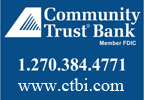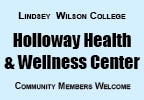| ||||||||||
Dr. Ronald P. Rogers CHIROPRACTOR Support for your body's natural healing capabilities 270-384-5554 Click here for details 


Columbia Gas Dept. GAS LEAK or GAS SMELL Contact Numbers 24 hrs/ 365 days 270-384-2006 or 9-1-1 Call before you dig Visit ColumbiaMagazine's Directory of Churches Addresses, times, phone numbers and more for churches in Adair County Find Great Stuff in ColumbiaMagazine's Classified Ads Antiques, Help Wanted, Autos, Real Estate, Legal Notices, More... 

|
State releases progress report on Child Welfare Transformation By Christina Dettman/Anya Armes Weber Frankfort, KY - The Kentucky Department for Community Based Services (DCBS), part of the Cabinet for Health and Family Services, has released its one-year report for its Child Welfare Transformation (CWT) efforts, and it shows progress in outcomes for children and a planned path toward greater preventive and community-based care for families. DCBS Commissioner Eric Clark said the effort began in 2018 in conjunction with several recent legislative gains for the department that provided additional state budget appropriations and improved options and resources for families and children. These gains include improvements such as the "fictive kin" placement option, the codified Foster Youth Bill of Rights, and the improved relative services array. Other positive factors were new opportunities for more flexible federal funding, particularly through the federal Family First Prevention Services Act of 2018, and the strong commitment of Gov. Matt Bevin and First Lady Glenna Bevin to making Kentucky the best child welfare system in the nation. "There is no denying that Kentucky is experiencing an unprecedented opportunity to transform its child welfare system," Clark said. "This report was created upon DCBS' own initiative to document the tremendous work and accomplishments that have been made during the last year and share our vision going forward." Clark credited the effort's workgroups, which include staff, national experts, advocates, providers, and project manager/DCBS Executive Advisor Jennifer Warren with developing the project's scope of work, strategies and tasks. Some of the projects positive outcomes include the following:
DCBS has identified three goals for its child welfare transformation:
"We are committed to being a data-informed, outcome-driven agency that will be more responsive to the serving the needs within our communities and families," Clark said. "I cannot thank all of the incredible DCBS employees, foster youth, advocates, community partners, and the many others enough for their time and inputs into helping us seize this special moment and initiate an ongoing radical transformation effort." Working with the central CWT Steering Committee and Stakeholder Advisory Council are the effort's nine workgroups, each consisting of a multidisciplinary panel of stakeholders and meeting multiple times over the past 14 months to concentrate on the core strategies of Culture of Safety, Aligned Service Array, Shared Focus on Outcomes and Collaborative Practice Approach. The nine workgroups are:
This story was posted on 2019-07-04 14:15:58
Printable: this page is now automatically formatted for printing.
Have comments or corrections for this story? Use our contact form and let us know. More articles from topic News:
Agencies urge caution regarding consuming distressed fish Blakey Quartet to sing at Harrods Fork Baptist Church July 7 Storms arriving on July 4th - should be gone by fireworks Letter: Adair Search & Rescue Team being dissolved State's death penalty protocol ruled unconstitutional Fire destroys Jim Beam Kentucky warehouse KYTC official to attend Russell Fiscal Court meeting Adair Co Farm Bureau closed for Fourth Fireworks Safety Tips Jim Blair Center changes on City Council agenda View even more articles in topic News |


|
||||||||
|
| ||||||||||
|
Quick Links to Popular Features
Looking for a story or picture? Try our Photo Archive or our Stories Archive for all the information that's appeared on ColumbiaMagazine.com. | ||||||||||
|
Contact us: Columbia Magazine and columbiamagazine.com are published by Linda Waggener and Pen Waggener, PO Box 906, Columbia, KY 42728. Please use our contact page, or send questions about technical issues with this site to webmaster@columbiamagazine.com. All logos and trademarks used on this site are property of their respective owners. All comments remain the property and responsibility of their posters, all articles and photos remain the property of their creators, and all the rest is copyright 1995-Present by Columbia Magazine. Privacy policy: use of this site requires no sharing of information. Voluntarily shared information may be published and made available to the public on this site and/or stored electronically. Anonymous submissions will be subject to additional verification. Cookies are not required to use our site. However, if you have cookies enabled in your web browser, some of our advertisers may use cookies for interest-based advertising across multiple domains. For more information about third-party advertising, visit the NAI web privacy site.
| ||||||||||




















































